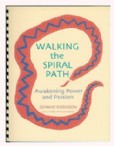From Education Week:
State GOP Lawmakers Push to Expand Vouchers

Some legislation would extend eligibility to middle-income families
Republican governors and lawmakers are pushing for a major expansion of voucher programs, efforts that in some cases seek to give taxpayer money for private school tuition to a much larger swath of the population, including middle-income families.
Many of those legislative endeavors come as no surprise, given that GOP candidates for state office made historic gains across the country last fall, in many instances after promising to expand school choice—a longtime priority for many Republicans.
But the proposals put forward this year are notable both for the diversity of strategies they use in attempting to channel more public funding for nonpublic school options, and for their ambitious reach.
To date, many state voucher programs have limited eligibility to students from disadvantaged families or other targeted populations, a structure that helped generate political and public support for them.
But legislation in some states, such as Indiana and Pennsylvania, would establish relatively loose income requirements that would give access to families who are not impoverished. And a sweeping bill in Florida would allow broad public access to vouchers, though the bill’s sponsor says his goal is to have it approved by lawmakers in the Republican-dominated legislature next year, rather than this year.
Backers of the proposals contend that families of all backgrounds—including middle-income ones—deserve more educational options, and that providing funding for private and religious schools would compel traditional public schools to improve.
“We want to empower parents to make choices in education,” said state Rep. Robert Behning, a Republican sponsor of voucher legislation in Indiana. “To provide more choice for parents, you need to create more options. … It shouldn’t be limited to just those at the poverty level.”
Hospitable Climate
At least 51 different pieces of legislation offering some type of mechanism for providing public funding for private education services have emerged in 35 states this year, according to the Foundation for Educational Choice, an Indianapolis organization that supports vouchers.
Lawmakers in numerous states are pushing proposals to set up or expand voucher programs. A few highlights:
Arizona:
Republican Gov. Janice K. Brewer this month signed into law a bill designed to create vouchers for special education students. But, citing cost concerns, she vetoed a measure that would have expanded a tax-credit program for entities that support private school scholarships.
Florida:
A proposal would create “education savings accounts” worth 40 percent of per-student state funding, or about $3,100, which families across the state could use for a host of private school services, including tutoring and virtual education.
Indiana:
A Republican-backed measure would set relatively loose eligibility requirements for vouchers and be open to both low- and middle-class families. it would also create tax deductions for vouchers and expand tax credits to organizations supporting them.
Pennsylvania:
A proposed voucher program would gradually expand eligibility for students from low-income backgrounds. the measure also creates a mechanism for families with incomes up to 300 percent of the poverty level to participate.
Those proposals include both direct vouchers for families, tax credits to individuals or organizations that support scholarships for students to go to nonpublic schools, and accounts that cover a range of private education costs, such as tutoring.
Robert C. Enlow, the president and chief executive officer of the organization, said that this year’s spate of voucher and tax-credit bills is not unusually high, but that “no year in recent memory” offered better chances for as many proposals making it into law.
The new, decisively Republican look in statehouses—the party in November won control of a majority of governor’s offices and the highest number of legislative seats since the 1920s—has clearly created a more hospitable environment for vouchers, Mr. Enlow said. The overall interest among policymakers in making dramatic—and controversial—changes in education, including in areas such as collective bargaining and teacher tenure, has also helped generate interest in private school choice, he said.
“The political landscape is definitely part of the equation,” Mr. Enlow said. “It emboldened legislators to go further, farther, and faster.”
Voucher proponents recently scored a victory in the District of Columbia, when Congress reinstated a voucher program that federal lawmakers had voted to end two years ago. (“D.C. Vouchers Resurrected in Budget Compromise,” April 27, 2011.)
But they have also experienced several legislative setbacks this year.
Arizona Gov. Janice K. Brewer, a Republican, signed a measure to establish a voucher program for special education students. But she rejected legislation to expand the state’s allowance of tax credits for private school scholarships, which she fears would cost the state too much money. And a number of voucher bills in other states have stalled in legislatures and will not become law this year.
Indiana’s legislation, which is supported by Republican Gov. Mitch Daniels, would allow families to receive vouchers if they earn incomes up to 150 percent of the federal qualifications for free or reduced-price lunches. Families of four with annual household incomes up to about $62,000 would be eligible.
Poorer families would be eligible for a larger share of state support—about 90 percent of per-student public funding—while students from families with greater annual income would receive less, 50 percent. For children in grades 1-8, the maximum voucher amount would top out at $4,500 per year; for students in grades 9-12, the amount would vary by family income level. The maximum number of eligible students eligible for vouchers would be 7,500 the first year, 15,000 the second year, and unlimited after that.
State Sen. Earline S. Rogers, a retired teacher, argued that the measure would hurt public schools’ finances. She also questioned the need for vouchers—particularly for middle-income families—given the strong presence of charter schools in the state, including in her northwest Indiana district.
“We’ve made full use of choice through charters,” said Ms. Rogers, the ranking Democrat on the Senate education committee. Vouchers “could be a drain on the budgets of local school corporations,” she added, “because they would be losing students.”
Unsympathetic Public?
In Pennsylvania, a recent version of a GOP-backed bill would expand poor families’ access to vouchers over time—and give middle-income families access to “excess” public funding that was not spent on disadvantaged students through the program.
The legality of state voucher proposals depends on individual states’ constitutions, said Dick Komer, a senior lawyer at the Institute for Justice, a libertarian public-interest law firm in Arlington, Va., that supports vouchers and other forms of school choice.
Thirty-nine states have provisions in their constitutions that in some way bar the use of public funds for religious schools or institutions.
Traditionally, voucher supporters have set up state programs focused on helping poor families, rather than wealthier ones, for political rather than legal reasons, because providing educational choice to needy families is an appealing concept, Mr. Komer said.
By attempting to expand vouchers to middle-class families, backers of those efforts have the potential to sell the idea to a larger audience of parents whose experiences have probably been with public rather than private schools. The obvious risk is that the public will not be sympathetic to channeling taxpayer money to private institutions, he said.
The goal is to “broaden the base of political support by broadening the people who benefit,” Mr. Komer said.
Others, like Mary Kusler of the National Education Association, predicted the public would take a dim view of large-scale expansions of vouchers, at a time when policymakers in several states propose deep reductions to public schools’ budgets.
“There are scarce resources at the state level,” said Ms. Kusler, the manager of federal advocacy for the 3.2 million-member teachers’ union, and policymakers are “cutting public education at the same time they’re offering private tuition to families.”
Accountability Concerns
Legislation in Florida seeks to make one of the broadest expansions of public aid for private school services.
A sweeping bill would make vouchers—called education savings accounts—widely available to families across the state, not just those in poverty. The vouchers would be worth 40 percent of current state per-student funding, or approximately $3,100 a year, and could pay for private school tuition, virtual education services; private tutoring; and public or private college tuition, among other costs. The overall concept has been embraced by the state’s Republican governor, Rick Scott, who was elected last fall and who has backed the idea publicly.
Florida was a pioneer in launching programs for private school choice, and today it offers vouchers to students with disabilities and provides corporations with tax credits to cover private school tuition costs for low-income students. But a broader voucher program, which provided taxpayer funds to students in struggling schools, was declared unconstitutional by the state supreme court in 2006, leading some to predict that an even farther-reaching proposal would meet the same fate. (“Fla. Court: Vouchers Unconstitutional,” Jan. 11, 2006.)
Candace Lankford, the president of the Florida School Boards Association, predicted that a large-scale, statewide voucher program would create the potential for fraud, because ensuring that so much public money was being used on private school costs would be difficult to track.
“Public accountability is not going to follow the public dollars,” she said.
State Sen. Joe Negron, the Republican sponsor of the current bill, said he does not expect it to become law this year, but hopes to build public and political support for passage next year. Mr. Negron, whose three children have all attended public schools, has heard criticism that the bill represents an overreach by voucher supporters, and that it would result in public schools’ losing large numbers of students and money, but he doesn’t buy it.
“That’s the traditional argument of a monopoly,” the lawmaker said. Over the next year, he predicted support for the plan would grow. “This is a big idea, and a transformative idea. I feel like we need to have a public airing of these issues.”

















